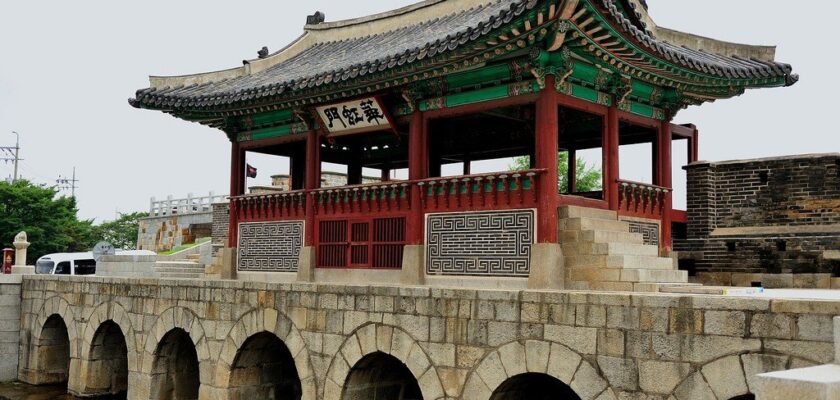Hwaseong Fortress
Hwaseong Fortress is a 5.74 km long picturesque fortress wall built in the late 18th century in the South Korean city of Suwon. The name “Hwaseong” means “blooming fortress” in Korean. The wall is perfectly preserved and perfectly blended into the city landscape. The old fortifications harmoniously combine Western and Eastern fortification traditions, making Hwaseong Fort unlike any other fortress in South Korea. Since 1997, the old fort has been listed as a UNESCO World Heritage Site.
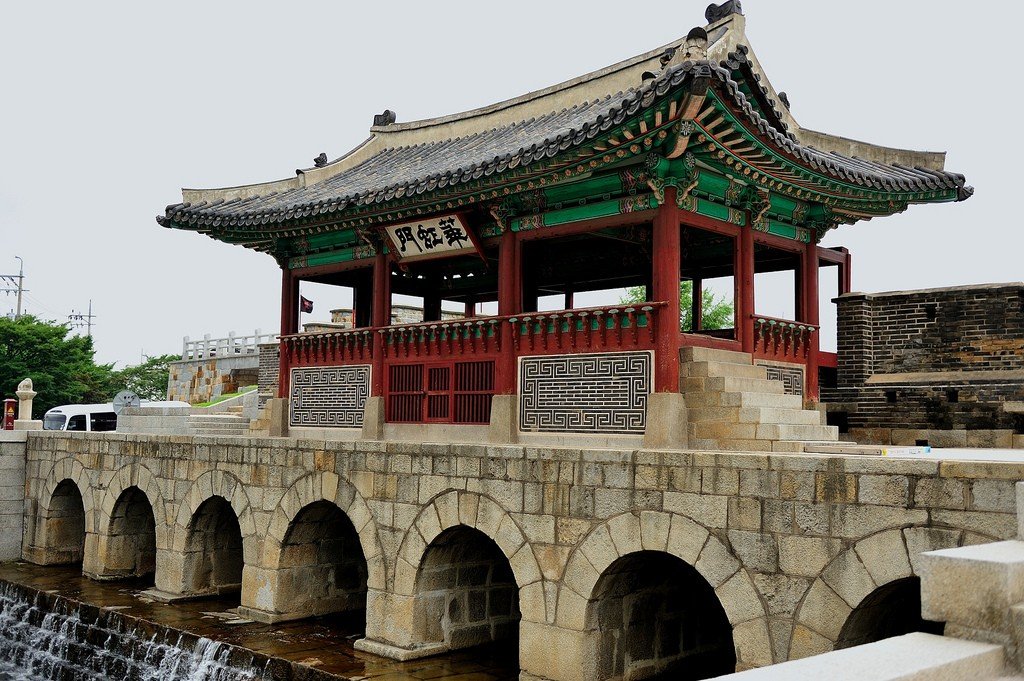
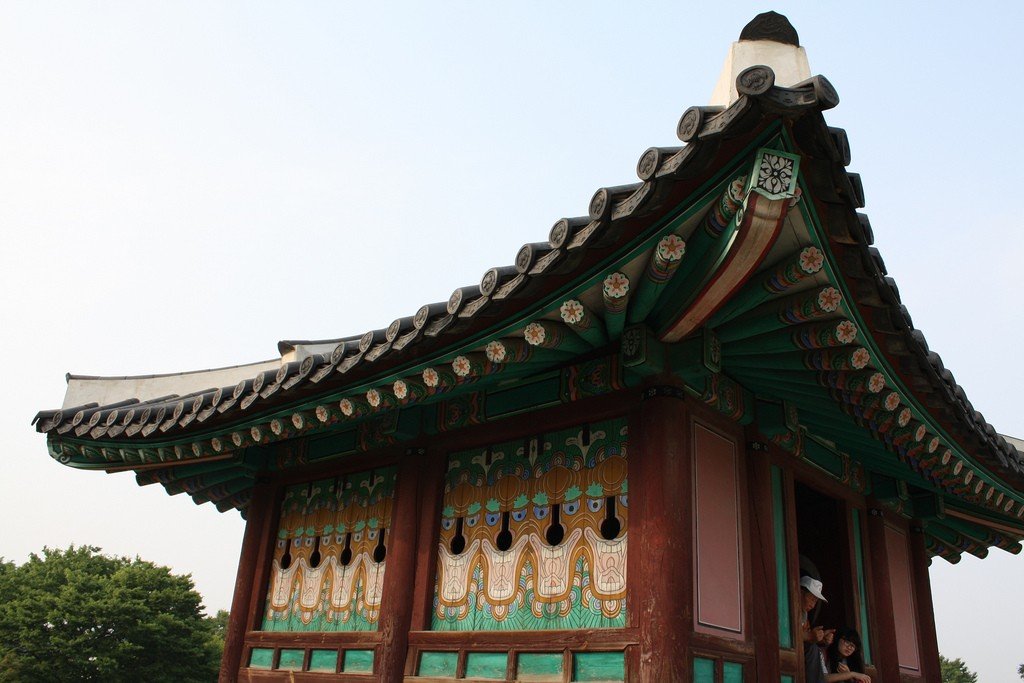
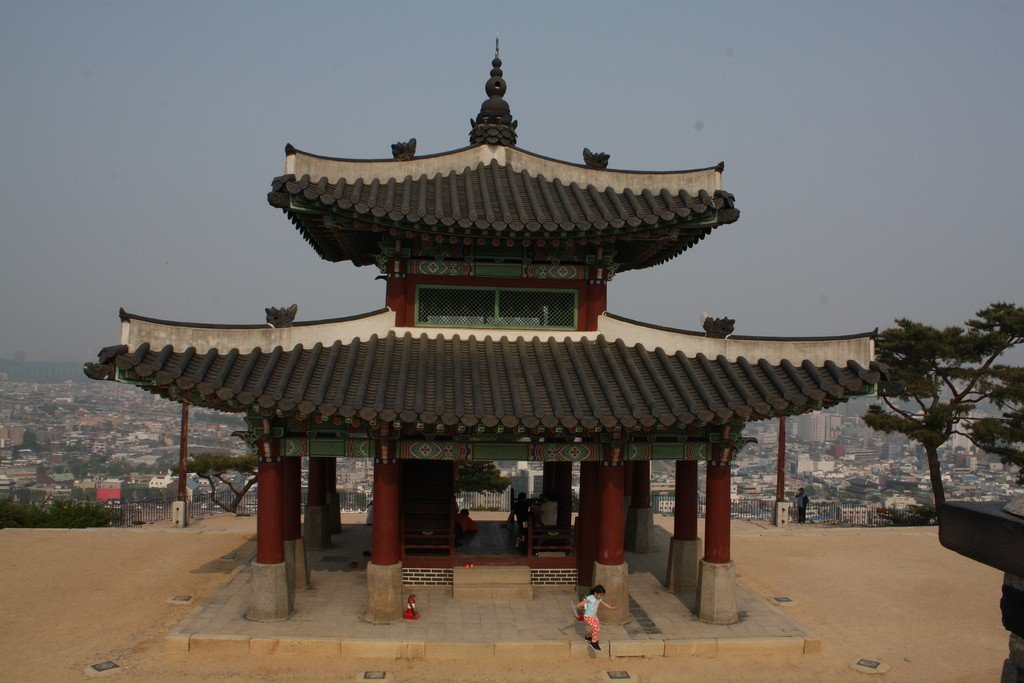
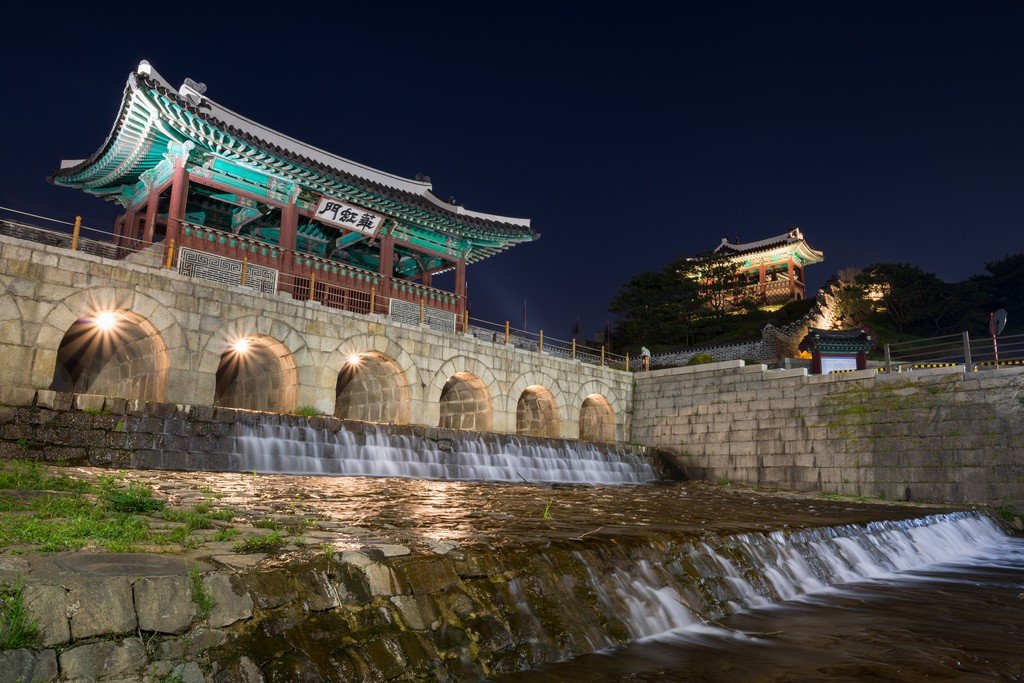
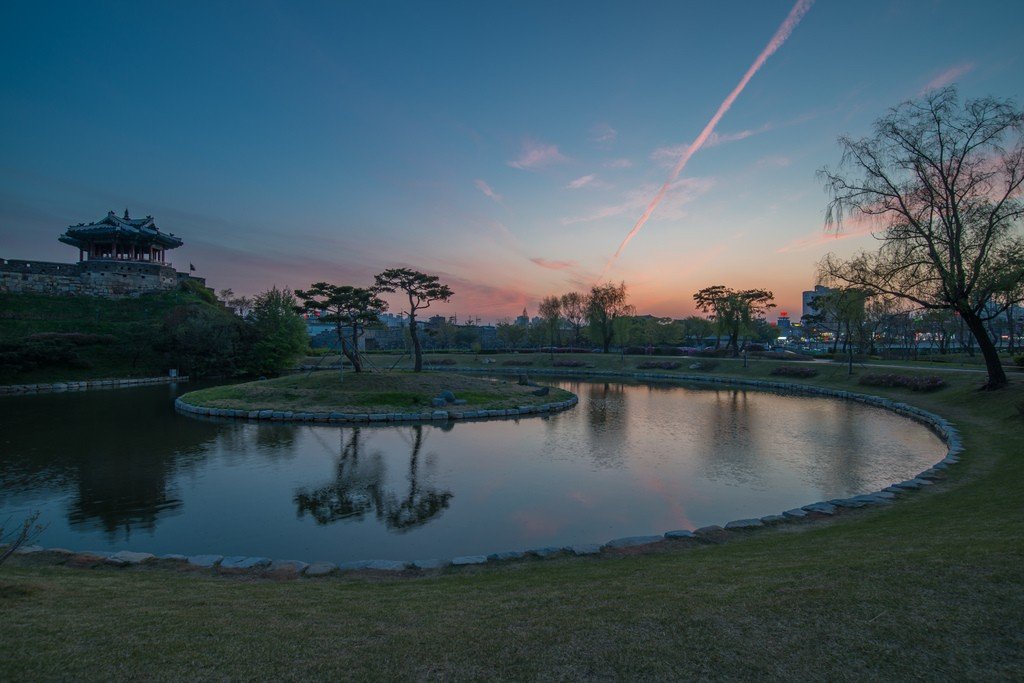
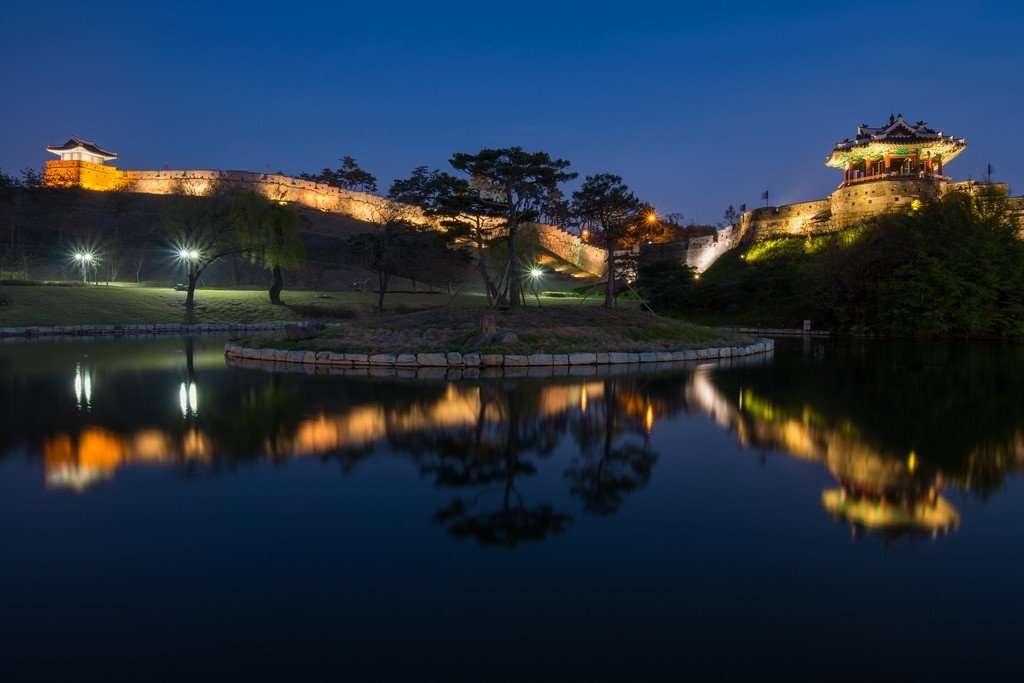
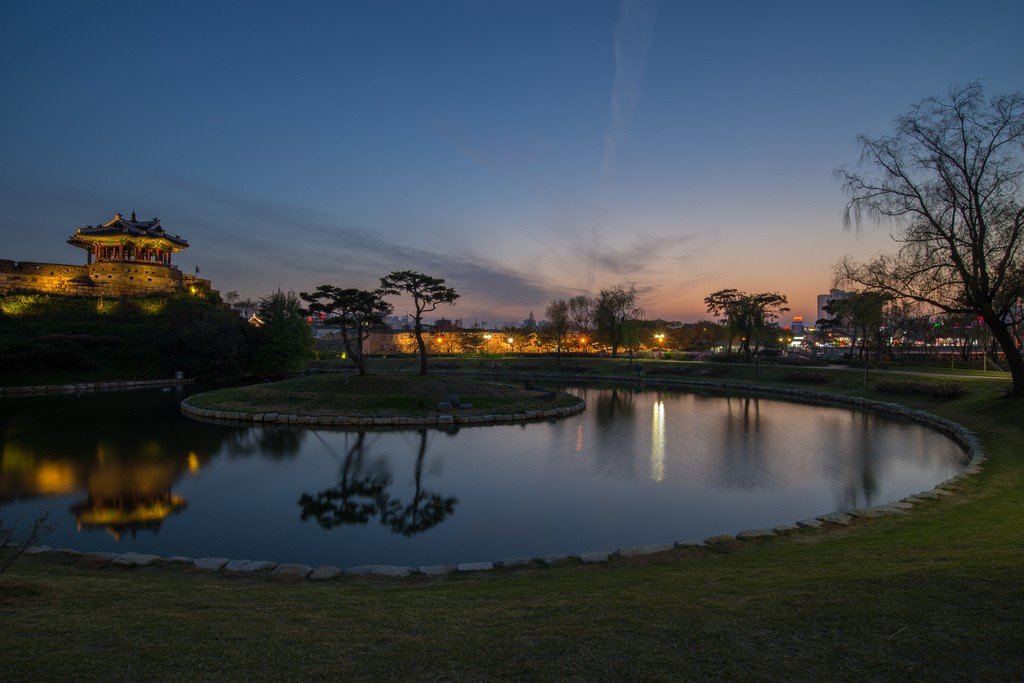
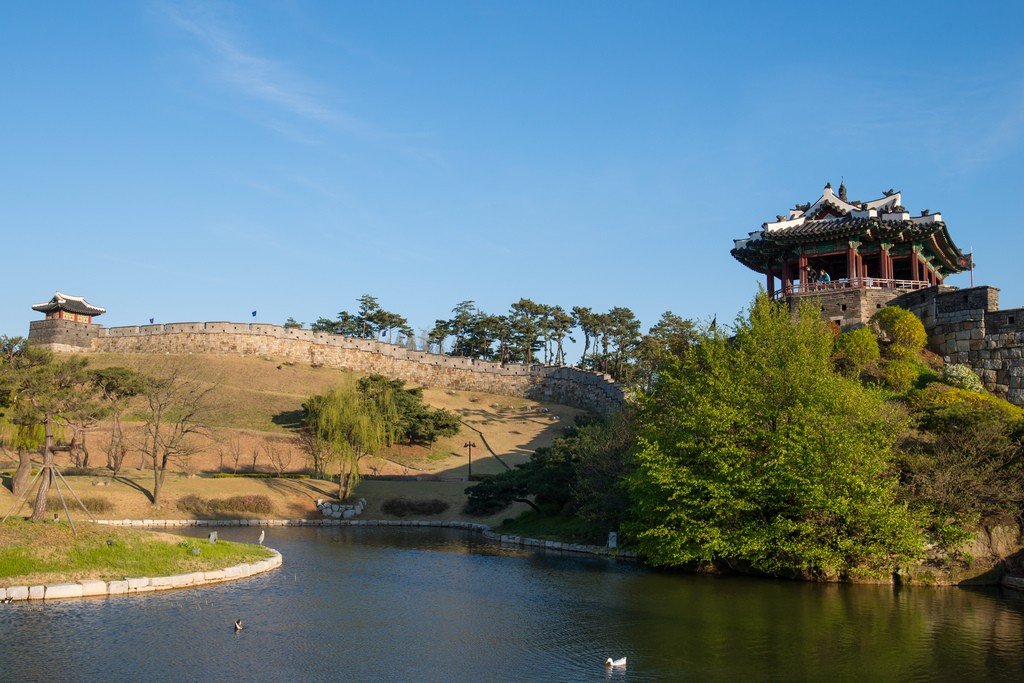
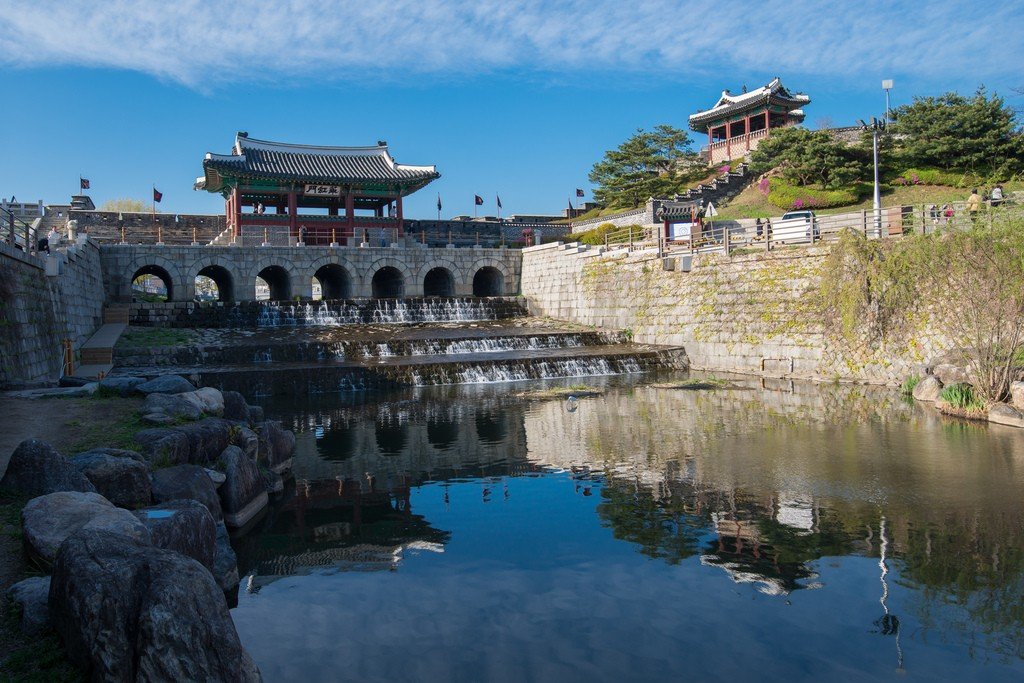
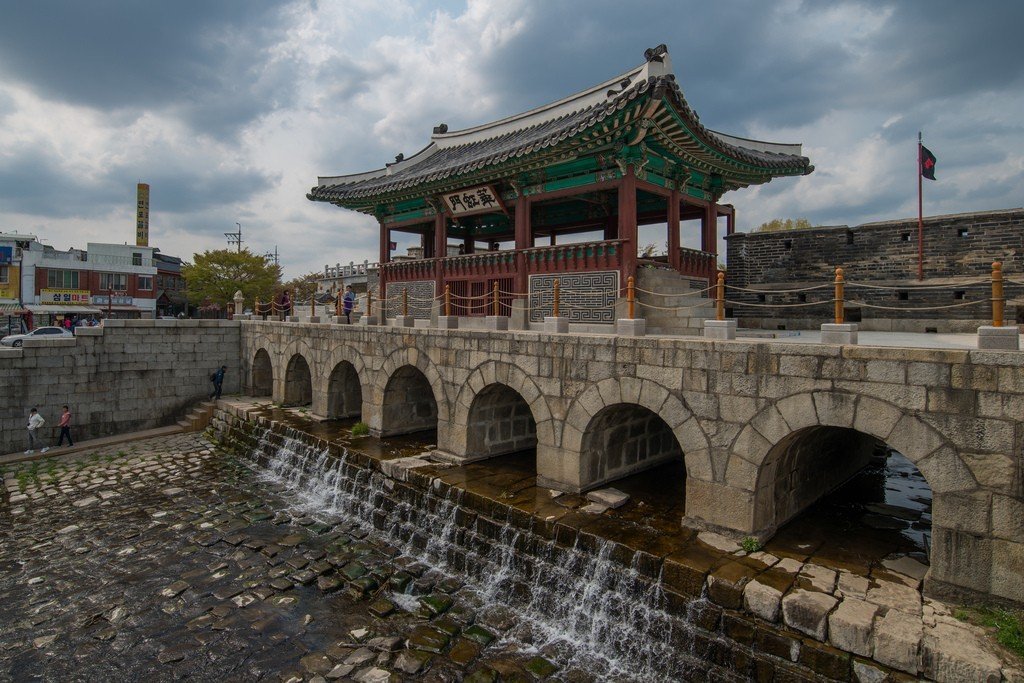
Video: Hwaseong Fort
Highlights
The fortification wall came into existence by decree of King Jeongjo, who wanted to memorialize his father, Crown Prince Sado-gun. The fortifications were built from 1794 to 1796 under the direction of Korean architect Jeong Yagyong. The construction of Hwaseong Fortress took 2.5 years and 700,000 man-hours, and the builders received 1,500 sacks of rice from the king for their work. When the fortifications were ready, the king moved the capital of the country to Suwon, and so that the city could grow faster, for 10 years released its residents from any taxes.
.
For tourists Hwaseong Fortress is open any day: from March to October from 9.00 to 18.00, and from November to February from 9.00 to 17.00. A walk along the wall, which is 4 to 6 meters high, offers panoramic views of Suwon and the distant spurs of the mountains. In the fortress, you can see watchtowers and other fortifications, and take part in an archery master class.
.Features of the architecture
There are four entrances to Hwaseong Fortress. The gates on the east and south sides are larger and are replicas of one of Seoul’s oldest architectural monuments, the Namdaemun Great Gate. The south gate suffered significant damage during the 1950-1953 Korean War, but was later rebuilt. Some entrances are completed by two-story pavilions and others by one-story pavilions. Around all four gates are lined with small forts where guards used to live.
.
At the end of the 18th century, there were 48 fortifications along the fortress walls, but natural disasters and wars destroyed 7 of them. Today, secret entrances, lookouts, guard towers and corner towers can be seen in Hwaseong Fort. In addition, the fort includes gun bastions, platforms for guards and archers, a gutter and command posts.
Of great interest is the signal tower, which served to transmit information over long distances. It was provided with five pipes. If an observer saw smoke coming from only one chimney, he realized that there was no war. When two chimneys were smoking, the people of Suwon received a message that an enemy had been detected in the fortress. Three smoking chimneys meant that the attack had begun, four meant that the enemy had managed to penetrate the fort, and five chimneys said that the battle was already going on inside Hwaseong.
.How to get there
Hwaseong Fort is located in the historic center of Suwon, 30 km south of Seoul. From Suwon Subway Station, you need to get off at Yeokjeon Market Bus Stop, and from there, take Bus No. 35 to the fortress.
.
